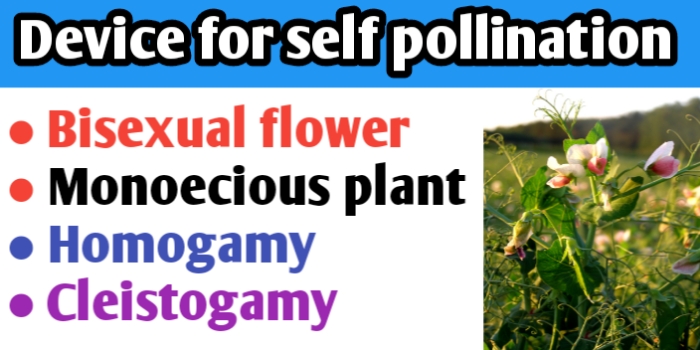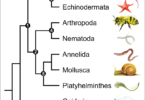Device favouring self pollination in angiosperm is, hi guys in this article you will know about device for self pollination and its example. Plants are said to be self pollinated when the Pollen is transferred from anther to a stigma of same flower or to the stigma of another flower on same plant.

Device favouring self pollination in angiosperm is
Self pollination usually takes place in monoecious plant or those plant bearing bisexual flower in which both male and female sex organ mature almost at the same time. Self pollination is further classified into Autogamy & Geitonogamy.
Autogamy is the transfer of pollen grains from anther of flower to the stigma of same flower. Example bisexual flower like pea, wheat, rice.
◆ Follow me on YouTube
Geitonogamy is defined as transfer of pollen grain from anther of one flower to the stigma of another flower which born on same plant. For example monoecious plant like maize.
■ WATCH THIS VIDEO
The self pollinated flowers develop many devices like direct touch of anther and stigma at maturity by bending of filament of stamen on stigma, this condition are found in plant mirabilis jalapa or by curving style on the anthers having terminal porous dehiscence, these are found in plant solanum tuberosum.
In Vinca rosea the anthers are present at the mouths of Corolla tube and at maturity when stigma passes through the mouth of Corolla tube, causing self pollination. In Sunflower self pollination takes place by the curving of receptive surface of stigma downward and inward thus coming in contact with their own pollen grain.
Device favouring self pollination in angiosperms is 4 types – (1) Bisexuality, (2) Homogamy, (3) Monoecious condition and (4) Cleistogamy. Bisexual flower are those flower in which both male (stamen) and female (pistil) sex organ develop in same flower, homogamy is defined as in which anther and stigma in bisexual flower attain maturity at same time,monoecious condition define as development of unisexual flower ( staminate & pistilate flower born on same plant and cleistogamy is defined as flowers which never opens, remain closed and do not expose their sex organs.
Device for self pollination in angiosperms is
Device favouring self pollination in angiosperms is 4 types – (1) Bisexuality, (2) Homogamy, (3) Monoecious condition and (4) Cleistogamy. Bisexual flower are those flower in which both male (stamen) and female (pistil) sex organ develop in same flower, hologamy is defined as in which anther and stigma in bisexual flower attain maturity at same time,monoecious condition define as development of unisexual flower ( staminate & pistilate flower born on same plant and cleistogamy is defined as flowers which never opens, remain closed and do not expose their sex organs.
Device for self pollination is 4 types :- bisexuality,homogamy, monoecious condition and cleistogamy.
1) Bisexuality:- bisexual flowers are those flowers in which male and female sex organ are present within same flower. Male sex organ is stamen and female sex organ is pistil both born within same flower. In bisexual condition both male and female sex organ lies close to each other, they do not need pollinating agent for transfer of pollen from anther to stigma. Their position are close to one another within same flower which favours self pollination.
2) Homogamy :- it is the condition in which anther and stigma in bisexual flower attain maturity at same time that favouring self pollination in flower. Mature stamen produce pollen grain and mature pistil of stigma shows responsive of pollen grain at same time, this condition are most essential for self pollination.
3) Monoecious condition:- These are unisexual flowers ( staminate flower & pistilate flowers) which are born in same plant like maize. Pistillate flower are born on lateral branch of maize plant and staminate flower are develop on top of maize plant, their position are far from one another, so transfer of pollen grains from anther to stigma of another flower need pollinating agent in this case, but both Unisexual flower are develop within same plant that’s why it is known as self pollination. Transfer of pollen grain from anther of one flower to stigma of another flower which are born on same plant are known as Geitonogamy.
Genetical point of view geitonogamy is self pollination because both in unisexual flower born on same plant but as ecological and function it is cross pollination because it needs pollinating agent for transfer of pollen grains from anther of one flower to stigma another flower.
4) Cleistogamy :- In cleistogamy flowers never open to expose their sex organ and the Pollen falls on stigma of same flower. This condition are most favouring the self pollination.






Leave a Comment